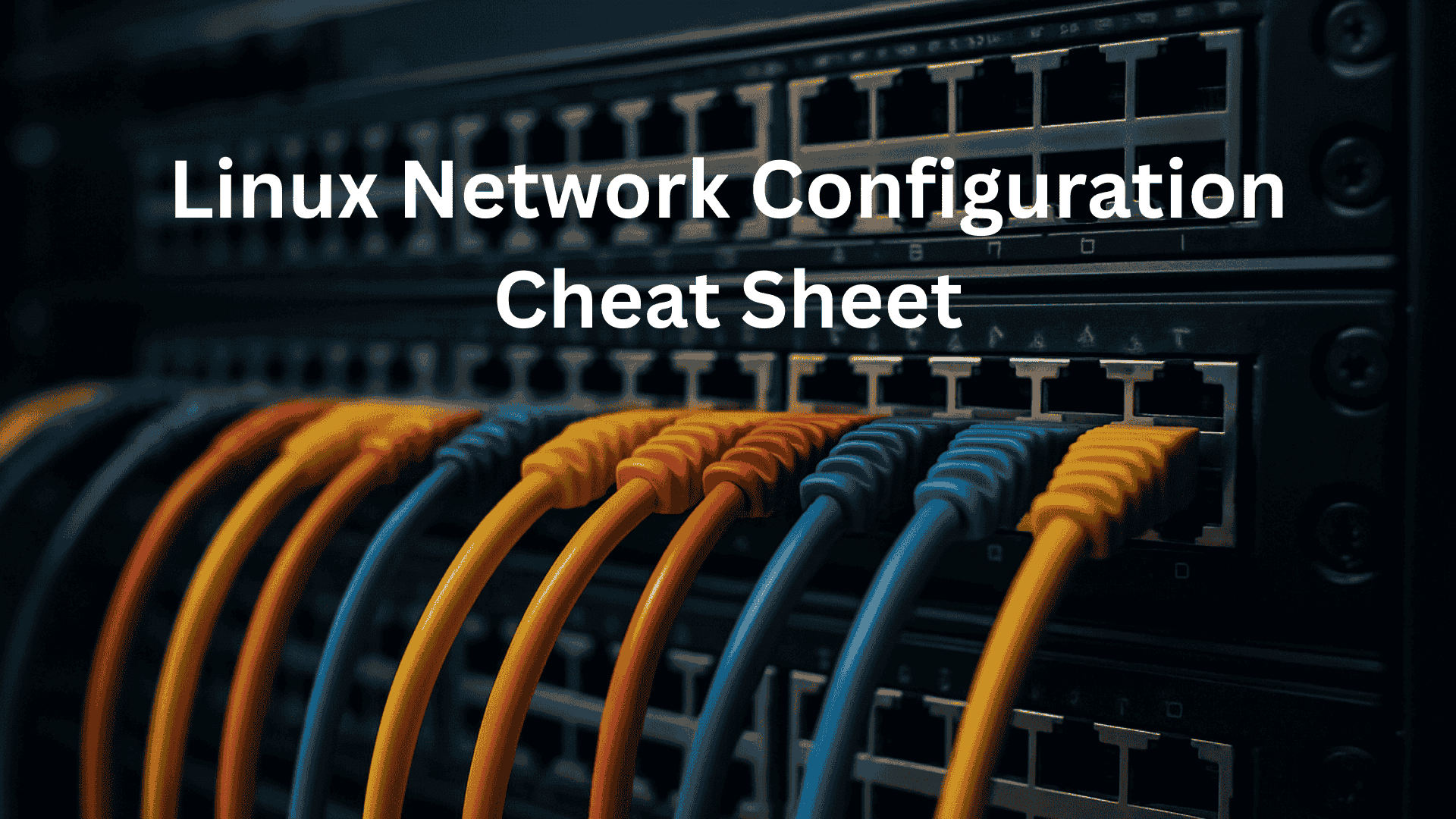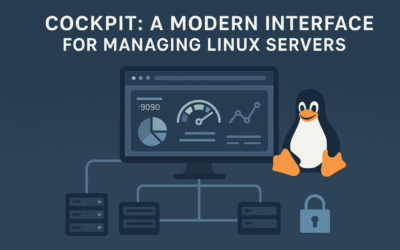Introduction
Linux, the powerhouse of servers and development environments, offers unparalleled control over networking. From simple home setups to complex enterprise infrastructures, understanding Linux network configuration is a fundamental skill. This cheat sheet aims to provide a concise yet comprehensive guide, covering traditional tools, the modern iproute2 suite, and specific configurations for Red Hat and Ubuntu. We’ll also highlight how to make your ad-hoc changes persistent across reboots.
Networking in Linux can seem daunting at first, with a multitude of commands and configuration files. However, at its core, it’s about managing network interfaces, IP addresses, routing tables, and name resolution. This guide will walk you through the essential commands and concepts, empowering you to confidently configure your Linux network.
Important Note: The network configurations detailed in this blog post are primarily intended for Linux systems running as pure servers or those without a graphical desktop environment (DE). If your Linux system has a Desktop Environment installed (such as GNOME, KDE, or XFCE), it will likely use its own built-in network management utility (e.g., NetworkManager). These DE-specific tools typically supersede and may conflict with the manual command-line and configuration file adjustments discussed here. For desktop users, it’s generally recommended to manage your network settings through your DE’s graphical interface to avoid unexpected behavior.
Linux Network Cheat Sheet
We’ll categorize our commands and configurations for clarity. Remember that ad-hoc commands are temporary and will be lost on reboot. To make them persistent, you’ll need to save them to the appropriate configuration files for your distribution.
I. Traditional Network Configuration (Legacy Tools)
While largely superseded by iproute2, these tools are still found on older systems or can be useful for quick checks.
ifconfig: Displays and configures network interfaces.
# Show all interfaces ifconfig -a # Show specific interface (e.g., eth0) ifconfig eth0 # Assign IP address and netmask (ad-hoc) sudo ifconfig eth0 192.168.1.100 netmask 255.255.255.0 # Bring interface up sudo ifconfig eth0 up # Bring interface down sudo ifconfig eth0 down
route: Manages the IP routing table.
# Display routing table route -n (numerical output) # Add a default gateway (ad-hoc) sudo route add default gw 192.168.1.1 # Add a static route to a network: sudo route add -net 10.0.0.0 netmask 255.255.255.0 gw 192.168.1.1 # Delete a route sudo route del -net 10.0.0.0 netmask 255.255.255.0
Netstat: Displays network connections, routing tables, interface statistics, etc.
# Show all listening ports netstat -tuln # Show routing table netstat -rn # Show interface statistics netstat -i
II. IP Route2 (Modern Tools)
The iproute2 suite is the preferred and more powerful set of tools for network configuration in modern Linux distributions.
ip link: Manages network devices.
# List all interfaces ip link show # Bring interface up/down sudo ip link set dev eth0 up sudo ip link set dev eth0 down # Change MAC address (requires interface down): sudo ip link set dev eth0 down sudo ip link set dev eth0 address 00:11:22:33:44:55 sudo ip link set dev eth0 up
ip address (or ip addr): Manages IP addresses on interfaces.
# List IP addresses ip addr show or ip a # Add IP address sudo ip addr add 192.168.1.100/24 dev eth0 # Delete IP address sudo ip addr del 192.168.1.100/24 dev eth0
ip route: Manages the routing table.
# Display routing table ip route show # Add a default gateway sudo ip route add default via 192.168.1.1 dev eth0 # Add a static route sudo ip route add 10.0.0.0/24 via 192.168.1.1 dev eth0 # Delete a route sudo ip route del 10.0.0.0/24
ip neigh (or ip neighbour): Manages ARP/Neighbor cache.
# Show ARP cache ip neigh show # Add a static ARP entry sudo ip neigh add 192.168.1.100 lladdr 00:11:22:33:44:55 dev eth0
III. Modern Red Hat and Latest Ubuntu Network Configuration
Modern Linux distributions have moved towards more abstracted network configuration tools.
Red Hat (RHEL/CentOS/Fedora)
Red Hat-based systems primarily use NetworkManager and nmcli (NetworkManager Command Line Interface) for configuration, with ifcfg files as a legacy option.
nmcli(NetworkManager CLI):
# List all connections nmcli con show # List all devices nmcli dev status # Create a new Ethernet connection (ad-hoc, then persist) sudo nmcli connection add type ethernet con-name myconnection ifname eth0 ip4 192.168.1.100/24 gw4 192.168.1.1 # Bring a connection up/down sudo nmcli con up myconnection sudo nmcli con down myconnection # Modify an existing connection (e.g., add DNS server) sudo nmcli con modify myconnection ipv4.dns "8.8.8.8" sudo nmcli con reload myconnection (to apply changes) # Delete a connection sudo nmcli con delete myconnection
ifcfgfiles (Legacy but still widely used for persistence):
– Located in/etc/sysconfig/network-scripts/.
– Example/etc/sysconfig/network-scripts/ifcfg-eth0for static IP:
TYPE=Ethernet BOOTPROTO=static NAME=eth0 DEVICE=eth0 ONBOOT=yes IPADDR=192.168.1.100 NETMASK=255.255.255.0 GATEWAY=192.168.1.1 DNS1=8.8.8.8
After editing, restart NetworkManager or the network service: sudo systemctl restart NetworkManager or sudo systemctl restart network (if NetworkManager is not used/installed)
Latest Ubuntu (and Debian)
Ubuntu (18.04 and later) uses Netplan for network configuration, which generates configuration for backend renderers like NetworkManager or systemd-networkd. Older versions use /etc/network/interfaces.
Netplan (Ubuntu 18.04+):
– Configuration files are YAML files located in /etc/netplan/.
– Example /etc/netplan/01-netcfg.yaml for static IP:
network:
version: 2
renderer: networkd # or NetworkManager
ethernets:
eth0:
dhcp4: no
addresses: [192.168.1.100/24]
gateway4: 192.168.1.1
nameservers:
addresses: [8.8.8.8, 8.8.4.4]
— Apply Netplan configuration: sudo netplan apply
— Generate debug information: sudo netplan generate --debug
/etc/network/interfaces (Older Ubuntu/Debian):
Example for static IP:
auto eth0
iface eth0 inet static
address 192.168.1.100
netmask 255.255.255.0
gateway 192.168.1.1
dns-nameservers 8.8.8.8 8.8.4.4
Restart networking service:
# Restart networking serviceUsing systemctl (Debian 8 with systemd) sudo systemctl restart networking # Using service command sudo service networking restart # Using /etc/init.d/ scripts sudo /etc/init.d/networking restart
IV. Making Ad-Hoc Commands Persistent
As mentioned, commands run directly in the terminal are temporary. To make them survive a reboot, you need to configure them through the distribution-specific configuration methods.
- For Red Hat/CentOS (using NetworkManager/
nmcli):- When you use
nmcli con addornmcli con modify, the changes are automatically saved to NetworkManager’s connection profiles (typically in/etc/NetworkManager/system-connections/). These profiles are persistent. - If using legacy
ifcfgfiles, directly edit the files in/etc/sysconfig/network-scripts/.
- When you use
- For Ubuntu/Debian (using Netplan):
- Create or modify YAML files in
/etc/netplan/. After making changes, runsudo netplan apply. Netplan handles generating the persistent configuration. - For older Ubuntu/Debian, edit
/etc/network/interfaces.
- Create or modify YAML files in
General approach for persistence:
- Identify your distribution’s primary network configuration tool/method. (NetworkManager with
nmcli/ifcfgfor Red Hat, Netplan for recent Ubuntu,/etc/network/interfacesfor older Ubuntu/Debian). - Translate your ad-hoc commands into the respective configuration syntax.
- Edit the appropriate configuration file(s). Always make a backup before editing:
sudo cp /etc/netplan/01-netcfg.yaml /etc/netplan/01-netcfg.yaml.bak - Apply/restart the network service. This varies by distribution and configuration tool (e.g.,
sudo netplan apply,sudo systemctl restart NetworkManager,sudo systemctl restart networking).
Final Thoughts
Mastering Linux network configuration is an invaluable skill. While ad-hoc commands provide immediate results for troubleshooting or temporary setups, understanding the persistent configuration methods for your specific Linux distribution is key to building stable and reliable network environments. Embrace iproute2 for its power and flexibility, and leverage distribution-specific tools like NetworkManager with nmcli or Netplan for streamlined and persistent configurations. Always remember to back up your configuration files before making significant changes!




